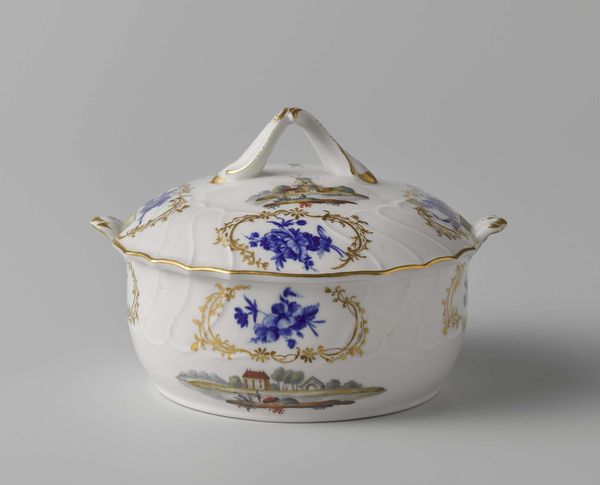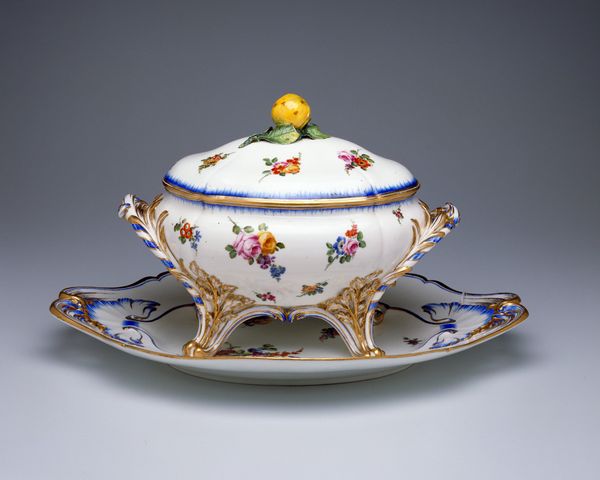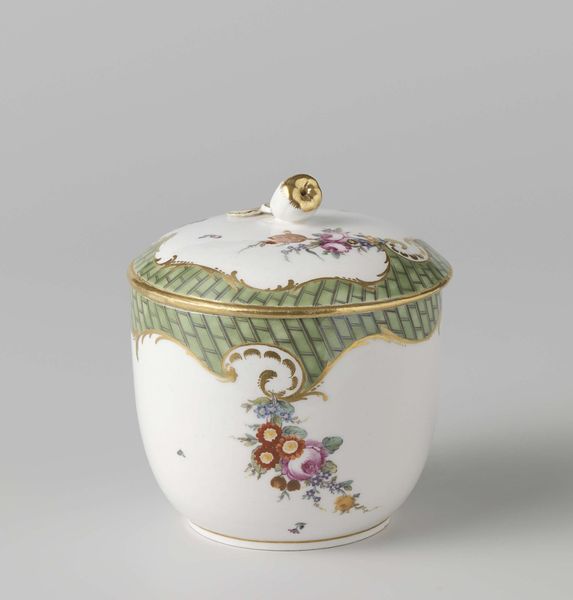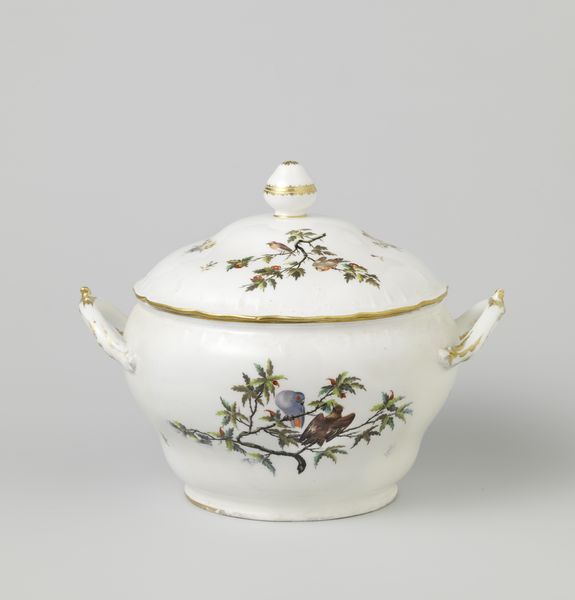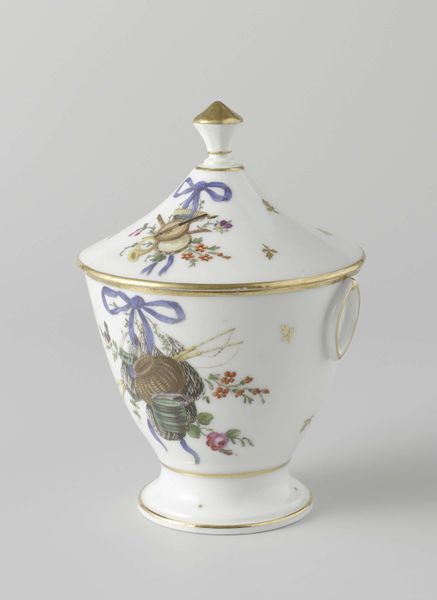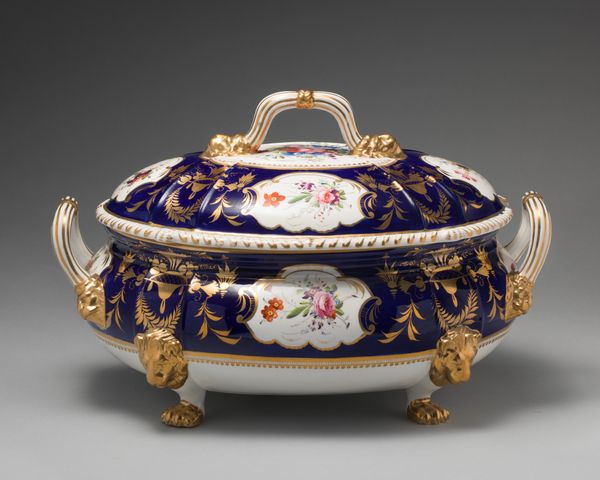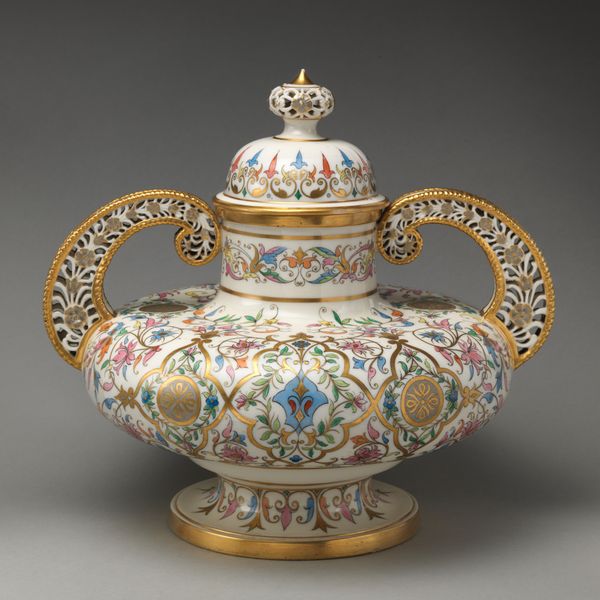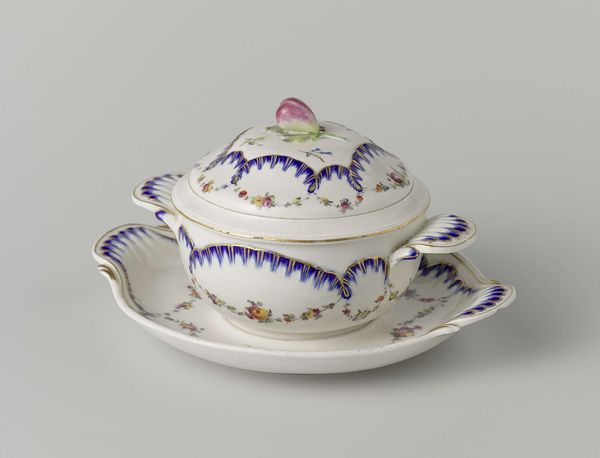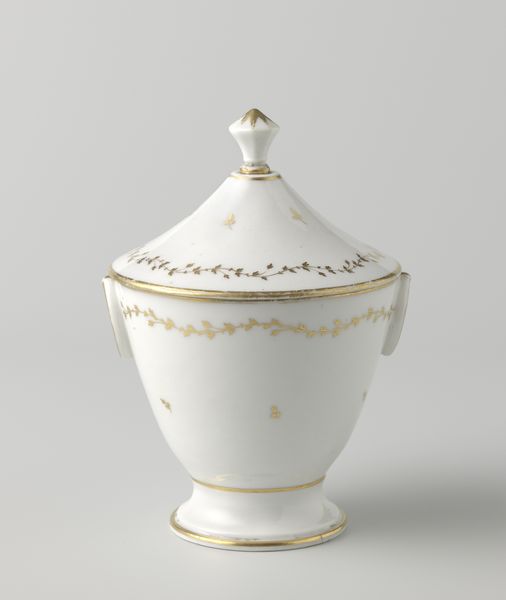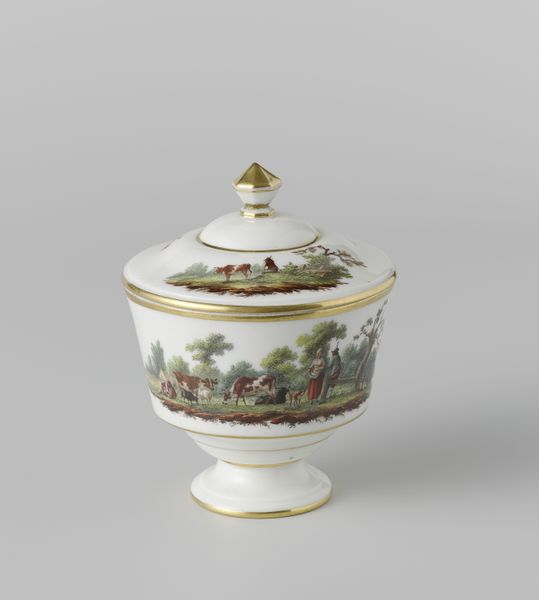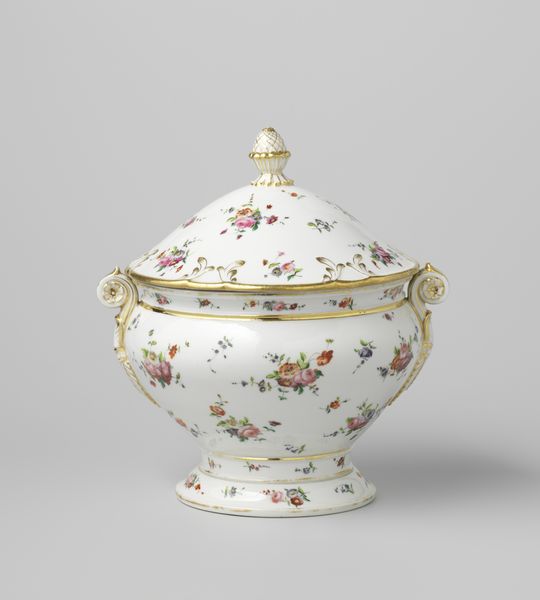
ceramic, porcelain
#
neoclacissism
#
ceramic
#
porcelain
#
decorative-art
Copyright: Public Domain
Editor: So, this lidded chocolate cup with saucer, made of porcelain sometime in the late 18th century... I'm immediately drawn to the silhouette. It's so crisp against the white porcelain. It's delicate and striking at the same time! What social context would give rise to something like this? Curator: Precisely! Think about what chocolate represented then - a luxury, an indulgence reserved for the upper classes. This cup isn't just functional; it's a statement. The neoclassical design, the precise silhouettes, the elaborate gilding - they all speak to the power and taste of the owner. Who do you think owned or commissioned an item such as this, and why? Editor: So, it’s a symbol of wealth and status? Maybe someone from the French court, displaying their refined taste? What is interesting is that silhouettes were accessible, yet they conveyed privilege here through sheer decoration. Curator: Exactly. Silhouettes, while more affordable than painted portraits, were still a popular way for the emerging middle class to emulate aristocratic trends. But placing it on fine porcelain elevates the form, signaling participation in a broader culture of gentility and luxury. Think of the rituals associated with drinking chocolate. Did the object somehow shape those rituals and behaviors? Editor: Hmm, it does seem like using a piece like this encourages refinement and ceremony. Like, you wouldn't gulp down hot chocolate from this cup! Curator: It certainly invited, even demanded, a certain performativity, didn’t it? An object such as this serves to remind us of how socio-political forces manifest within even seemingly simple decorative arts. Editor: That's such a great way to look at it. I guess everyday objects can really reflect history. I will never think about porcelain cups the same way again!
Comments
No comments
Be the first to comment and join the conversation on the ultimate creative platform.
